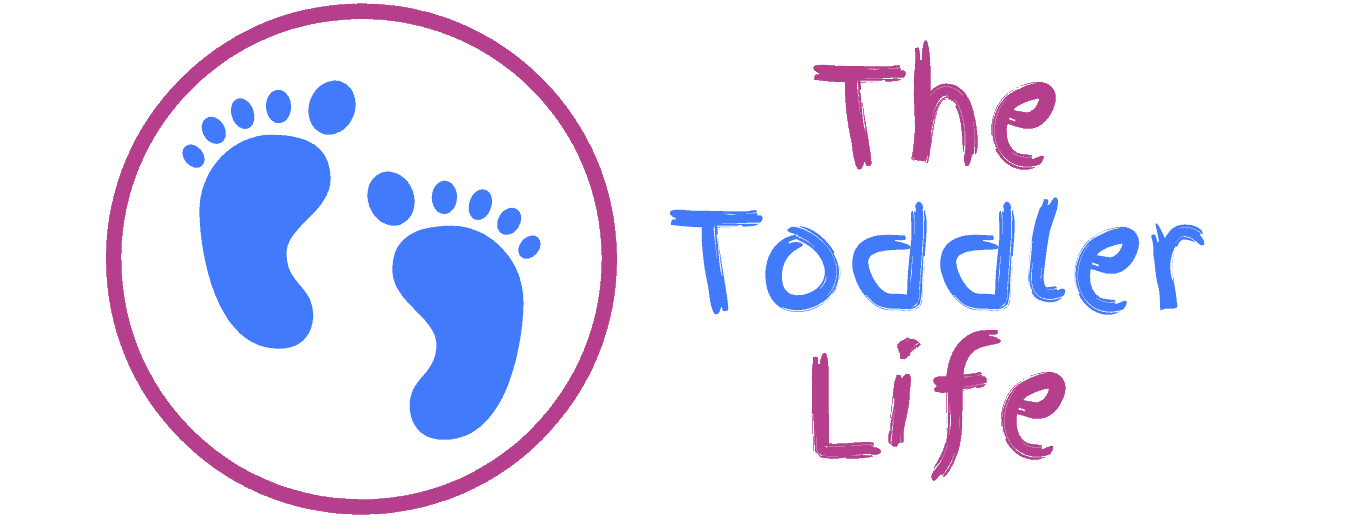Toddler tantrums can turn even the most organized day into chaos. Busy moms may feel overwhelmed and question their parenting choices.
These emotional outbursts are a normal part of child development. Knowing how to handle them effectively can make a big difference for both parent and child.

The key to managing toddler tantrums lies in understanding their triggers and maintaining calm communication. Implementing consistent strategies that work with a child’s developmental stage is essential.
Experts emphasize that managing toddler tantrums requires a blend of empathy, proactive strategies, and effective communication. Recognizing common triggers like hunger, overstimulation, and fatigue is crucial.
Busy mothers need practical solutions that fit into their hectic schedules. Supporting a child’s emotional growth remains important.
The most effective approaches focus on prevention through routine and clear boundaries. Age-appropriate expectations help toddlers navigate their big feelings in healthy ways.
Key Takeaways
- Understanding tantrum triggers like hunger, tiredness, and overstimulation helps parents prevent many meltdowns before they start.
- Calm communication and offering simple choices empower toddlers while reducing power struggles.
- Consistent routines and positive reinforcement create security for children and support busy parents’ daily schedules.
Understanding Toddler Tantrums
Toddler tantrums stem from developmental changes in the brain and limited communication skills. Most children between 15 months and 3 years experience these intense emotional outbursts as they learn to navigate their feelings.
Why Toddlers Have Tantrums
Toddler temper tantrums are intense emotional outbursts that occur when children cannot communicate their needs effectively. During toddlerhood, the brain is rapidly developing emotional regulation skills.
Children at this age experience overwhelming feelings but lack the vocabulary to express them. Their prefrontal cortex, which controls impulse and emotional regulation, is still developing.
Key developmental factors include:
- Limited language skills
- Desire for independence
- Inability to process complex emotions
- Frustration with physical limitations
Toddlers have a strong desire for independence and want to explore on their own. When faced with limits or boundaries, they react with tantrums because they cannot yet understand or accept restrictions.
The emotional intensity toddlers feel is real and valid. They experience strong emotions without the coping mechanisms or communication tools to handle them.
Common Triggers for Outbursts
Several factors can trigger tantrum episodes in young children. Understanding these triggers helps parents anticipate and prevent many outbursts.
Primary triggers include:
| Physical Needs | Emotional Needs | Environmental Factors |
|---|---|---|
| Hunger | Overstimulation | Crowded spaces |
| Tiredness | Frustration | Loud noises |
| Thirst | Feeling overwhelmed | Schedule changes |
Toddlers who are tired and hungry don’t have the inner resources to handle frustration. Managing a child’s basic needs reduces tantrum frequency significantly.
Frustration often occurs when toddlers attempt tasks beyond their developmental abilities. They may want to dress themselves, build complex structures, or communicate complex thoughts but lack the skills to succeed.
Warning signs that precede tantrums:
- Whining or repetitive requests
- Changes in body language
- Increased clinginess
- Difficulty following simple instructions
Transitions between activities frequently trigger outbursts. Moving from a preferred activity to a less desirable one challenges toddlers’ limited flexibility and understanding of time concepts.
Normal Range of Toddler Emotions
Temper tantrums are a normal part of toddler development, affecting around 80-90% of children between ages 1 and 3 years old. This high percentage demonstrates that tantrums represent typical developmental behavior.
Typical tantrum characteristics:
- Duration: 2-15 minutes
- Frequency: 1-4 times per week
- Peak age: 18 months to 2.5 years
- Gradual decrease after age 3
During toddlerhood, children begin experiencing the full spectrum of human emotions. They feel anger, sadness, joy, fear, and excitement with remarkable intensity but lack emotional vocabulary and regulation skills.
The frequency of tantrums tends to decrease as children approach 3 years old. Many children outgrow them altogether by ages 4-5.
Normal emotional development includes:
- Intense reactions to minor frustrations
- Difficulty calming down independently
- Black-and-white thinking patterns
- Immediate emotional responses without consideration
Children at this stage are like “emotional sponges” who absorb and react to their environment intensely. Their emotional responses may seem disproportionate to adults but reflect their genuine experience of overwhelming feelings.
Effective Parenting Strategies for Tantrums
Managing toddler outbursts requires specific techniques that address both prevention and response. The most successful approaches focus on stopping tantrums before they start and responding with calm consistency.
Rewarding good behavior and maintaining clear rules are also important.
Proactive Prevention Techniques
Prevention works better than reaction when dealing with toddler tantrums. Parents can reduce meltdowns by recognizing early warning signs and addressing triggers before emotions escalate.
Common Tantrum Triggers:
- Hunger or thirst
- Tiredness or overstimulation
- Transitions between activities
- Feeling misunderstood or unheard
Smart parents watch for these signs. A cranky toddler who missed snack time needs food, not discipline.
Creating predictable routines helps children feel secure. When kids know what comes next, they feel less anxious and more cooperative.
Daily Structure Elements:
- Consistent meal and nap times
- Warning before transitions (“5 more minutes at the park”)
- Clear expectations for different activities
- Regular bedtime routines
Effective communication strategies can prevent many tantrums. Parents should get down to their child’s eye level and speak clearly about what will happen next.
Gentle Parenting and Mindful Reactions
How parents respond during tantrums shapes how quickly children calm down. Staying calm and connected helps kids learn to manage big emotions.
The first step involves taking a deep breath. When parents feel triggered, their stress makes the situation worse.
Gentle Response Strategies:
- Use a calm, quiet voice
- Acknowledge the child’s feelings
- Stay physically close but not restraining
- Avoid arguing or reasoning during the meltdown
Child psychologists recommend validating emotions while maintaining boundaries. Parents can say “You’re really upset about leaving the playground” without giving in to demands.
Physical comfort helps when the child allows it. Some kids need space during tantrums, while others want hugs.
Wait for the storm to pass. Trying to teach lessons during a meltdown rarely works because the child’s brain cannot process complex information.
Positive Reinforcement Methods
Positive reinforcement builds good behavior more effectively than punishment. Children repeat actions that get attention and praise.
Effective Praise Techniques:
- Be specific about good choices
- Praise effort, not just results
- Give attention immediately after good behavior
- Use physical affection like high-fives
Parents should catch kids being good. When a toddler shares toys or uses words instead of hitting, immediate praise strengthens that behavior.
Proven strategies show that reward systems work well for older toddlers. Simple sticker charts or earning special activities motivate cooperative behavior.
Reward Ideas:
- Extra story time
- Choosing the family movie
- Special one-on-one time with parent
- Small privileges like staying up 10 minutes later
Natural consequences teach better than punishments. If a child throws toys, the toys get put away until they can play safely.
Staying Consistent With Boundaries
Consistency gives children security and helps them learn family rules. When parents change rules based on mood or situation, kids get confused and test boundaries more.
Key Consistency Elements:
| Area | Example |
|---|---|
| Rules | No hitting stays the same everywhere |
| Consequences | Same response to same behavior |
| Expectations | Bedtime routine doesn’t change |
| Communication | All caregivers use same phrases |
Both parents need to agree on important rules. Mixed messages from different caregivers create more behavioral problems.
Managing tantrums effectively requires following through every time. If parents sometimes give in to tantrums, children learn that screaming eventually works.
Flexibility within consistency works best. The rule about no candy before dinner stays firm, but parents can offer choices like “Would you like carrots or apple slices for snack?”
Children feel safer when they know what to expect. Clear, consistent boundaries reduce anxiety and behavioral outbursts over time.
Communication Tips for Busy Moms
Strong communication helps toddlers understand their big emotions and reduces the intensity of tantrums. Simple language and active listening create connection even during the most challenging moments.
Teaching Toddlers to Identify Feelings
Toddlers experience intense emotions but lack the words to express them. Teaching feeling words prevents many meltdowns before they start.
Moms can start with basic emotion labels during calm moments. Happy, sad, mad, and scared are perfect starting points for toddlerhood.
When a toddler shows emotion, parents should name what they see. “You look frustrated because your tower fell down” gives children vocabulary for their experience.
Feeling identification strategies:
- Use picture books showing different emotions
- Make silly faces together to practice expressions
- Create a simple feelings chart with basic emotions
- Point out emotions in everyday situations
Reading facial expressions develops naturally when parents consistently label emotions. A mom might say “I see your angry face” instead of “stop being difficult.”
Effective communication for mothers strengthens the parent-child bond while reducing stress.
Practice happens throughout the day. Grocery store frustration becomes “You’re disappointed we can’t buy cookies.” Bedtime resistance becomes “You’re sad playtime is over.”
Using Simple Language to Connect
Complex explanations confuse toddlers and escalate situations. Short, clear sentences work better during emotional moments.
Instead of “We need to leave because we have errands and your brother has soccer practice,” try “Time to go home.” Toddlers process information differently than older children.
Language guidelines for toddlerhood:
- Use 3-5 words maximum during tantrums
- Repeat the same phrase consistently
- Avoid asking “why” questions when emotions run high
- Offer simple choices when possible
Positive language prevents power struggles. “Walking feet” sounds better than “don’t run.” “Gentle touches” works better than “stop hitting.”
Moms should match their tone to their message. Calm, steady voices help regulate toddler emotions even when words don’t sink in immediately.
Body language matters as much as words. Getting down to eye level shows respect and makes connection easier during difficult moments.
Active Listening and Empathy
Toddlers need to feel heard even when their requests can’t be granted. Active listening validates emotions while maintaining necessary boundaries.
When a toddler melts down about leaving the playground, reflecting feelings helps first. “You really don’t want to leave. The swings are so fun.”
Active listening techniques:
Repeat back what the child expressed
Acknowledge feelings before addressing behavior
Use “I see” and “I hear” statements
Stay calm when emotions escalate
Improving communication with busy kids requires intentional strategies that fit into hectic schedules.
Empathy doesn’t mean giving in to every demand. A mom can understand disappointment while still enforcing bedtime.
“You wish you could stay up later. Sleep helps your body grow strong.”
Physical comfort supports emotional connection. Hugs, gentle touches, or simply sitting close communicates care when words aren’t enough.
Busy schedules make patience difficult, but taking time to truly listen prevents bigger problems later. Two minutes of connection often saves twenty minutes of tantrum management.
Developmental Milestones and Behavior

Tantrums often align with specific developmental stages when toddlers gain new skills but lack emotional regulation abilities. Understanding these connections helps parents respond appropriately and support healthy social-emotional development during this challenging phase.
Linking Tantrums to Development
Developmental milestones directly influence tantrum frequency and intensity. Between 12-24 months, toddlers develop language skills faster than their ability to express complex emotions.
This creates frustration when they cannot communicate their needs effectively. The mismatch between cognitive development and emotional regulation triggers many meltdowns.
Common Development-Related Triggers:
New walking skills leading to falls and frustration
Growing independence desires conflicting with safety limits
Increased awareness of surroundings without understanding rules
Language comprehension exceeding verbal expression abilities
Toddlers also begin recognizing themselves as separate individuals during this period. This newfound independence clashes with their continued need for help, creating internal conflict that manifests as tantrums.
Parents should expect more frequent outbursts during periods of rapid skill development.
Supporting Social-Emotional Growth
Social-emotional development requires consistent practice and patient guidance from caregivers. Toddlers learn emotional regulation through repeated experiences with supportive adults who model appropriate responses.
Key Support Strategies:
Name emotions: “You feel angry because the block tower fell down”
Validate feelings: “It’s hard when things don’t work the way you want”
Offer choices: “Would you like to rebuild or try something else?”
Stay calm: Children mirror adult emotional responses during stress
Reading facial expressions and understanding social cues are emerging skills during toddlerhood. Toddlers often misinterpret neutral expressions as negative, leading to unnecessary distress.
Practice identifying emotions through books, pictures, and daily interactions. This builds emotional vocabulary and helps toddlers recognize feelings before they escalate into tantrums.
Consistent routines also support emotional development by creating predictability. When toddlers know what to expect, they feel more secure and experience fewer overwhelming moments.
Adjusting Expectations as Toddlers Grow
Realistic expectations prevent unnecessary power struggles and reduce tantrum triggers. Toddlers cannot consistently control impulses or remember rules due to brain development limitations.
Their prefrontal cortex, responsible for decision-making and impulse control, remains immature until early adulthood. This biological reality means expecting perfect behavior sets both parent and child up for failure.
Age-Appropriate Expectations:
12-18 months: Following simple one-step instructions
18-24 months: Playing independently for 5-10 minutes
2-3 years: Using words instead of hitting when frustrated
Attention spans remain very short throughout toddlerhood. Most toddlers can focus on activities for only 2-3 minutes per year of age.
Adjusting daily schedules around natural attention limits reduces frustration. Shorter activities with frequent breaks prevent overstimulation and subsequent meltdowns.
Parents should also recognize that regression is normal during stressful periods or developmental leaps. Temporary backward steps in behavior often precede significant forward progress in other areas.
Real-Life Scenarios and Practical Solutions

Every parent faces moments when their toddler’s emotions explode into full meltdowns. The key lies in having specific strategies ready for different situations, whether at home or in public spaces.
Surviving Public Tantrums
Public tantrums create stress for both parent and child. The first step involves staying calm while other people watch.
Parents should kneel down to the child’s eye level and speak in a quiet, steady voice.
Quick Response Steps:
Remove the child from the situation if possible
Offer two simple choices: “We can sit here quietly or go to the car”
Acknowledge feelings: “You’re upset because we can’t buy the toy”
Many parents find success with distraction techniques. A small bag of crackers or a favorite toy can redirect attention.
Gentle parenting approaches focus on empathy while maintaining boundaries.
The aftermath matters just as much. Once the child calms down, parents can briefly discuss what happened.
Handling Meltdowns at Home
Home tantrums allow for different strategies than public ones. Parents have more time and space to work through the child’s big emotions.
Creating a calm-down space helps toddlers learn self-regulation skills.
Home Tantrum Toolkit:
Designated quiet corner with soft pillows
Timer for cooling off periods
Simple emotion cards showing happy, sad, angry faces
Consistent response phrases
Some children need physical comfort during meltdowns. Others prefer space to process their feelings.
Parents should observe what works best for their specific child. Hungry or tired toddlers have less emotional control.
Building a Support Routine
Daily routines give toddlers security and predictability. When children know what comes next, they feel more in control.
This reduces the chance of meltdowns throughout the day.
Essential Routine Elements:
- Morning: Same wake-up time and breakfast sequence
- Transitions: Five-minute warnings before changing activities
- Evening: Consistent bedtime routine starting at the same time
Practical parenting solutions emphasize the importance of flexibility within structure. Parents can adjust timing while keeping the same order of activities.
Support also means having backup plans ready. When the regular routine gets disrupted, having alternative activities prevents chaos.
Smart parents keep a mental list of quick solutions for different scenarios. Building these routines takes about three weeks to become automatic.
Parents should expect some resistance initially as toddlers adjust to new expectations.
Self-Care and Support for Moms
Managing stress through intentional self-care practices helps mothers stay emotionally regulated during difficult parenting moments. Creating strong support networks provides essential backup when exhaustion and overwhelm threaten effective parenting strategies.
Managing Parental Stress
Physical care forms the foundation of stress management for busy mothers. Taking three deep breaths during overwhelming moments helps reset the nervous system instantly.
Sleep becomes non-negotiable for emotional regulation. Mothers should prioritize rest by going to bed 30 minutes earlier or napping when children watch television.
Movement reduces stress hormones naturally. A five-minute walk around the block or stretching while coffee brews provides immediate relief.
Mental breaks prevent burnout effectively. Writing down all mental tasks on paper clears headspace and reduces anxiety about forgotten responsibilities.
Simple rituals anchor stability during chaotic days:
Use the same favorite mug each morning
Take one minute to look outside and name five things visible
Listen to one preferred song during car rides
Setting boundaries protects energy by saying no to optional commitments that drain rather than restore.
Building a Reliable Support Network
Family members provide immediate backup during challenging parenting moments. Mothers should ask grandparents or partners to handle specific duties like bedtime routines or meal preparation.
Mom friends understand unique challenges that others cannot relate to. Connecting with other parents through playgroups or neighborhood walks creates mutual support systems.
Professional help offers specialized guidance when stress becomes overwhelming. Pediatricians, family counselors, or parent coaches provide expert strategies for difficult situations.
Online communities extend support beyond geographic limitations. Parenting forums and social media groups offer 24/7 access to advice and encouragement.
Trading services with neighbors creates win-win arrangements:
Alternating school pickup duties
Sharing babysitting responsibilities
Exchanging meals during busy weeks
Clear communication prevents misunderstandings when requesting help. Mothers should specify exact needs rather than hoping others will guess what support looks like.
Frequently Asked Questions
Parents often struggle with understanding when tantrums are normal developmental behavior versus concerning patterns that need intervention. Different ages require specific approaches, from gentle redirection for 18-month-olds to calm boundary-setting techniques for older preschoolers.
What are the effective strategies for managing severe temper tantrums in 2-year-olds?
Parents should remain calm and avoid giving in to demands during severe tantrums. Two-year-olds lack the emotional regulation skills to self-soothe effectively.
The most effective approach involves staying nearby without engaging in lengthy explanations. Simple phrases like “I see you’re upset” acknowledge their feelings without escalating the situation.
Distraction works well before tantrums peak. Parents can offer two choices to help toddlers feel some control while maintaining necessary boundaries.
Creating a safe space where the child can express emotions without hurting themselves or others proves essential. Remove dangerous objects and ensure the environment supports emotional release safely.
After tantrums end, parents should offer comfort and connection. This helps rebuild the parent-child bond and teaches that love remains constant even during difficult moments.
When should parents be concerned about the frequency and intensity of a toddler’s tantrums?
Daily tantrums lasting over 30 minutes consistently may indicate underlying developmental or emotional needs requiring professional guidance. Most typical tantrums peak around age 2 and gradually decrease.
Parents should monitor if tantrums include aggressive behaviors toward others, self-harm, or destruction of property regularly. These behaviors extend beyond normal developmental expressions of frustration.
Concerns arise when tantrums occur multiple times daily for several weeks without improvement. Sleep disruption, appetite changes, or withdrawal from previously enjoyed activities alongside frequent tantrums warrant attention.
Professional consultation becomes important if tantrums interfere significantly with family functioning or the child’s ability to participate in age-appropriate activities. Mindful parenting techniques can help parents assess their responses and create calmer environments.
Parents should trust their instincts when something feels beyond typical toddler behavior patterns. Early intervention supports both child development and family well-being.
What techniques can parents use to calm down a 3-year-old having frequent severe tantrums?
Three-year-olds benefit from predictable routines that reduce anxiety and unexpected transitions. Parents should establish consistent daily schedules for meals, naps, and activities.
Teaching simple breathing techniques helps children develop self-regulation skills. Parents can model “flower breathing” – smelling a flower slowly, then blowing out birthday candles gently.
Creating visual cues like emotion charts allows 3-year-olds to identify feelings before they become overwhelming. Pictures showing happy, sad, angry, and scared faces provide communication tools.
Parents should validate emotions while maintaining boundaries firmly and kindly. Phrases like “You wanted the toy, and it’s hard when we have to wait” acknowledge feelings without changing rules.
Offering comfort items like special blankets or stuffed animals during difficult moments provides security. These transitional objects help children self-soothe when parents cannot provide immediate physical comfort.
How can gentle parenting approaches be applied to handle tantrums in a 5-year-old child?
Five-year-olds possess greater language skills, allowing parents to engage in problem-solving conversations after emotions settle. Parents should wait until the child feels calm before discussing solutions.
Gentle parenting emphasizes understanding the underlying needs behind tantrum behaviors. Five-year-olds may tantrum due to tiredness, hunger, overstimulation, or feeling powerless in their environment.
Parents can teach emotion regulation by helping children identify body signals that precede big feelings. Discussing how their heart beats faster or hands feel tense creates self-awareness.
Setting clear expectations with natural consequences works effectively with 5-year-olds. Parents should explain rules calmly and follow through consistently without harsh punishments.
Collaborative problem-solving empowers children to participate in finding solutions. Parents might ask, “How can we handle this differently next time?” to develop the child’s critical thinking skills.
At 18 months, what are appropriate methods for addressing toddler tantrums?
Eighteen-month-olds have limited language skills, making tantrums their primary way of communicating big emotions. Parents should focus on staying calm and providing physical safety rather than reasoning.
Simple redirection works effectively at this age. Parents can offer interesting objects or move to different environments to shift the child’s attention naturally.
Physical comfort through gentle holding or back rubbing helps some 18-month-olds regulate emotions. Others prefer space and may escalate with physical contact during peak distress.
Parents should use minimal words during active tantrums. Short phrases like “You’re safe” or “I’m here” provide reassurance without overwhelming their developing language processing abilities.
Consistency in responses helps 18-month-olds learn what to expect from caregivers. Parents should respond similarly to similar situations to build trust and security.
What should parents do when they notice an increase in the severity of a 4-year-old’s temper tantrums?
Parents should examine recent changes in the child’s life that might trigger increased emotional dysregulation. New schools, family stress, schedule disruptions, or developmental leaps often intensify tantrum behaviors.
Four-year-olds benefit from increased one-on-one attention during calm moments. Expert-backed parenting strategies emphasize the importance of connection before correction.
Parents should evaluate whether current boundaries and expectations match the child’s developmental abilities. Overly rigid or inconsistent rules can contribute to increased frustration and acting out.
Implementing calming strategies before tantrums occur proves more effective than managing them afterward. Parents can create quiet spaces, offer sensory tools, or adjust daily schedules to prevent overwhelm.
Professional support becomes valuable when parents feel overwhelmed or when family relationships suffer due to intense tantrum behaviors. Child development specialists provide personalized strategies for individual family situations.

